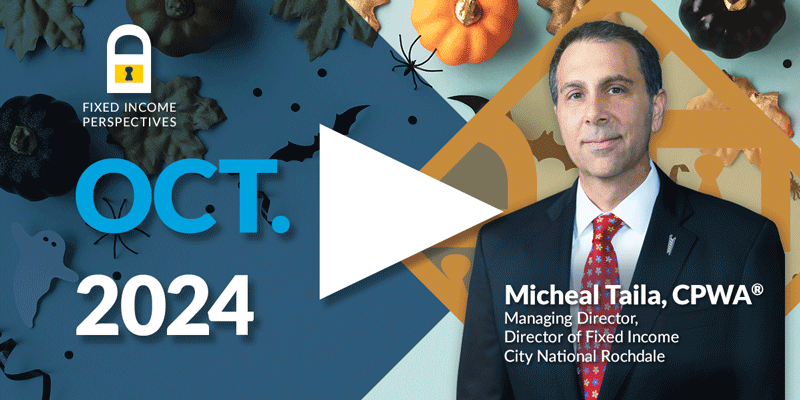

FAQs on the Markets and Economy
What does CNR make of the negative GDP report for Q1?
GDP took a surprising decline in Q1, falling 1.4%. It was brought down by the trade deficit widening and a slower pace of inventory growth. However, the pace of consumer spending remains strong, increasing 2.7% quarter over quarter.
Despite the decline in Q1 growth, this expansion continues on a steep upward trajectory, especially compared with past expansions (see chart). The GDP report does not alter our view of a multi-year recovery. First, let’s put some context around this report. The unemployment rate is at 50-year lows with plenty of jobs available, wages are up, and household balance sheets are solid. When concerned about the risk of a recession, the first place to look is a sharp decline in domestic demand. We do not see that happening in the near term. What caused Q1 GDP to be negative was demand being too strong. The trade deficit resulted from demand outpacing domestic production, so imports had to be increased to meet that demand. Inventories had trouble recovering because demand is too strong. This is why the Fed has to raise interest rates along the entire curve to slow down the pace of demand. For some, the concern is that the Fed over-tightens and chokes off demand. But with the interest rate still hovering around the emergency level of near-zero percent, the Fed needs to have several hikes to bring the rate up to the neutral level, never mind a restrictive level. The risk of a recession is far out in the distance.

What did the Fed decide at their recent meeting?
The Fed is taking a double-barreled approach to removing monetary stimulus. Regarding the federal funds rate, they just approved a rare 50 bp increase. That will put the median funds rate at 0.875%. That increase was the largest jump in the funds rate since 2000. For the past 20 years or so, they had only raised rates in 25 bp increments.
In regards to the balance sheet, they plan to shrink their bond holding. They will taper into this strategy. Starting in June, they will allow bonds in their portfolio to mature without reinvesting the proceeds. For the first three months, they will allow $30 billion in Treasuries and $17.5 billion in mortgages to mature. After that, they will ramp it up to $60 billion in Treasuries and $35 billion in mortgages.
The Fed has a tough job ahead of them. They are attempting a soft landing of the economy. The slower pace of growth should help bring down the inflation rate toward its target of 2.0%

What’s behind recent market volatility?
With 2022 shaping up to be one of the worst starts ever for the S&P 500, markets continue to grapple with the potential impacts of Fed tightening and higher inflation on the economy, corporate profits and stock valuations, in addition to heightened uncertainty around the global outlook.
While risk to the outlook has risen, and further downside is possible, some perspective is also in order. Even with sharply higher interest rates, US stock valuations remain attractive relative to bond valuations. Meanwhile, earnings in aggregate have been relatively strong, with approximately 80% of companies in the S%P 500 reporting better than expected results in Q1, and forward earnings estimates remain over the long-term average.
Although the volatility seen this year can be uncomfortable, we continue to think the strength of underlying US fundamental conditions should offer broader support to stock prices over time. Recession risk over the next 12 months remains fairly low and corrections tend not to become prolonged bear markets when the outlook for economic and corporate profit growth remains positive.
So far the current correction of 13.9% is not abnormal and matches closely in line with the historical postwar average of 14.3%. We are now likely headed toward later stages of this economic cycle, which is typically marked by more modest returns and higher volatility. Equity markets tend to hold up reasonably well during this period, but as the cycle advances, liquidity is withdrawn and growth slows, the investment backdrop becomes more challenging.

What are the credit quality trends of U.S. States?
Despite the evolving macroeconomic and policy environment, US state quality benefits from positive credit and sector fundamentals that should persist over the near term, further bolstering fiscal positions ahead of the next budget cycle beginning July 1st (for 46 states). Since the initial months of the pandemic, the rebound in most states’ economies, particularly labor gains and consumer spending, is leading to solid tax collection performance and surplus revenue. According to the Urban Institute, FY 2021 total state revenues recovered nicely with a more than 17% increase year-over-year (YoY), while FY 2022 forecast revenue is in line for at least 4% YoY growth. State budget projections for FY 2023 show a slowdown in tax collections as the national economy moderates, exposing potential downside risks amid geopolitical events and U.S. monetary policy decisions. However, federal aid and reserve build-up should support a timely budget enactment process in the coming weeks.
Per a recent survey from the National Association of State Budget Officers (NASBO), projected rainy day balances for states will be stronger this budget cycle than pre-pandemic FY 2019, enhancing budget flexibility. Moreover, liquidity levels remain sound, an essential cash management tool typical of state governments that helps underpin the strong credit ratings of the sector (high-AA quality on average). We continue to monitor the increasing number of states either proposing or enacting tax reform, such as lowering personal income tax rates and property tax rebates to temporary suspensions of the gas tax, among other legislative actions. Prudent planning paired with the maintenance of sufficient reserves and other fiscal safeguards is necessary to achieve budget balance and mitigate potential pressure at both the state and lower levels of government, such as cities and counties.
Last year, the above-target financial market returns improved the funded status of many of the largest public pension plans of states. PEW data calculate FY 2021 pension funded ratios exceeded 80% for the first time since the financial crisis of 2008-2009. CalPERS earned above 21% in California, raising its funded ratio to 82%. Some states used excess returns to improve their plan assumptions, while others used budget surpluses to augment scheduled pension contributions. Current financial market volatility underscores the need to continue managing long-term liabilities effectively. Nevertheless, most states enter the upcoming FY in a reasonably good position to maintain budget stability.

Important Disclosures
The information presented does not involve the rendering of personalized investment, financial, legal or tax advice. This presentation is not an offer to buy or sell, or a solicitation of any offer to buy or sell, any of the securities mentioned herein.
Certain statements contained herein may constitute projections, forecasts and other forward-looking statements, which do not reflect actual results and are based primarily upon a hypothetical set of assumptions applied to certain historical financial infor-mation. Certain information has been provided by third-party sources, and although believed to be reliable, it has not been inde-pendently verified, and its accuracy or completeness cannot be guaranteed.
Any opinions, projections, forecasts and forward-looking statements presented herein are valid as of the date of this document and are subject to change.
There are inherent risks with equity investing. These include, but are not limited to, stock market, manager or investment style risks. Stock markets tend to move in cycles, with periods of rising prices and periods of falling prices.
Investing in international markets carries risks such as currency fluctuation, regulatory risks and economic and political instability.
There are inherent risks with fixed income investing. These may include, but are not limited to, interest rate, call, credit, market, inflation, government policy, liquidity or junk bond risks. When interest rates rise, bond prices fall. This risk is heightened with in-vestments in longer-duration fixed income securities and during periods when prevailing interest rates are low or negative.
Investing involves risk, including the loss of principal.
As with any investment strategy, there is no guarantee that investment objectives will be met, and investors may lose money.
Past performance is no guarantee of future performance.
This material is available to advisory and sub-advised clients, as well as financial professionals working with City National Rochdale, a registered investment advisor and a wholly-owned subsidiary of City National Bank. City National Bank provides investment management services through its sub-advisory relationship with City National Rochdale.
Non Deposit Investment Products are: Not FDIC Insured, Not Bank Guaranteed, May Lose Value
The information presented does not involve the rendering of personalized investment, financial, legal, or tax advice. This presentation is not an offer to buy or sell, or a solicitation of any offer to buy or sell any of the securities mentioned herein.
Certain statements contained herein may constitute projections, forecasts and other forward-looking statements, which do not reflect actual results and are based primarily upon a hypothetical set of assumptions applied to certain historical financial information. Readers are cautioned that such forward-looking statements are not a guarantee of future results, involve risks and uncertainties, and actual results may differ materially from those statement. Certain information has been provided by third-party sources and, although believed to be reliable, it has not been independently verified and its accuracy or completeness cannot be guaranteed.
Past performance or performance based upon assumptions is no guarantee of future results.
Indices are unmanaged and one cannot invest directly in an index. Index returns do not reflect a deduction for fees or expenses.
Any opinions, projections, forecasts, and forward-looking statements presented herein are valid as on the date of this document and are subject to change.
All investing is subject to risk, including the possible loss of the money you invest. As with any investment strategy, there is no guarantee that investment objectives will be met and investors may lose money. Diversification does not ensure a profit or protect against a loss in a declining market. Past performance is no guarantee of future performance.
This material is available to advisory and sub-advised clients, as well as financial professionals working with City National Rochdale, a registered investment adviser and a wholly-owned subsidiary of City National Bank. City National Bank provides investment management services through its sub-advisory relationship with City National Rochdale.
INDEX DEFINITIONS
S&P 500 Index: The S&P 500 Index, or Standard & Poor’s 500 Index, is a market-capitalization-weighted index of 500 leading pub-licly traded companies in the U.S. It is not an exact list of the top 500 U.S. companies by market cap because there are other criteria that the index includes.
Muni Bond: A municipal bond is a debt security issued by a state, municipality or county to finance its capital expenditures, includ-ing the construction of highways, bridges or schools. These bonds can be thought of as loans that investors make to local govern-ments.
Bloomberg Barclays U.S. Corporate High Yield Bond Index: measures the USD denominated, high-yield, fixed-rate corporate bond market.
Dow Jones Select Dividend Index: The Dow Jones U.S. Select Dividend Index looks to target 100 dividend-paying stocks screened for factors that include the dividend growth rate, the dividend payout ratio and the trading volume. The components are then weighted by the dividend yield.
The SIFMA Municipal Swap Index: The Securities Industry and Financial Markets Association Municipal Swap Index is a 7-day high-grade market index comprised of tax-exempt Variable Rate Demand Obli-gations (VRDOs) with certain characteristics. The Index is calculated and published by Bloomberg. The Index is overseen by SIFMA’s Municipal Swap Index Committee.
CalPERS: The California Public Employees’ Retirement System, also known as CalPERS, is an organization that provides numerous benefits to its 2 million members, of which 38% are school members, 31% public agency members, and 31% state members.
Stay Informed.
Get our Insights delivered straight to your inbox.
Put our insights to work for you.
If you have a client with more than $1 million in investable assets and want to find out about the benefits of our intelligently personalized portfolio management, speak with an investment consultant near you today.
If you’re a high-net-worth client who's interested in adding an experienced investment manager to your financial team, learn more about working with us here


